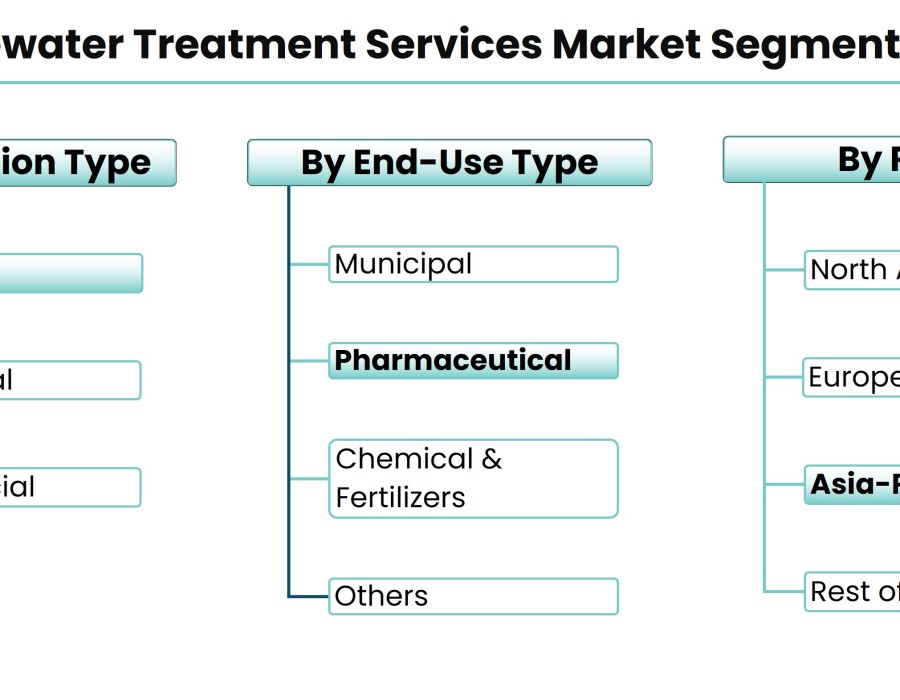The wastewater treatment services market is experiencing substantial growth due to heightened environmental concerns, regulatory mandates, and the need for sustainable water management practices. As urbanization and industrial activities continue to expand globally, the demand for efficient wastewater treatment solutions is escalating. This article delves into the key market dynamics shaping the wastewater treatment services industry and provides forecasts for its future growth.
According to Stratview Research, the wastewater treatment services market was estimated at USD 55.72 billion in 2022 and is likely to grow at a CAGR of 6.2% during 2023-2028 to reach USD 80.16 billion in 2028.
Market Dynamics
1. Regulatory Pressures and Environmental Compliance
Environmental regulations are becoming increasingly stringent worldwide, compelling industries and municipalities to adopt advanced wastewater treatment solutions. Regulatory bodies are enforcing stricter discharge limits for pollutants to protect water bodies and ecosystems. Compliance with these regulations necessitates the implementation of sophisticated treatment technologies, driving the demand for wastewater treatment services.
2. Technological Advancements
Technological innovations are significantly influencing the wastewater treatment services market. Advanced treatment processes such as membrane filtration, ultraviolet (UV) disinfection, and biological nutrient removal (BNR) are enhancing the efficiency and effectiveness of wastewater treatment. Moreover, the integration of digital technologies like the Internet of Things (IoT) and artificial intelligence (AI) is enabling real-time monitoring and optimization of treatment operations, leading to improved performance and cost savings.
3. Urbanization and Population Growth
Rapid urbanization and population growth are placing immense pressure on existing wastewater treatment infrastructure. Cities are expanding, and with them, the volume of domestic and industrial wastewater is increasing. This surge necessitates the development of new treatment facilities and the upgrading of existing ones to manage the higher demand. Governments and municipalities are investing heavily in wastewater infrastructure projects to address these challenges, creating significant opportunities for service providers.
4. Industrial Expansion
The expansion of various industries, including pharmaceuticals, textiles, chemicals, and food processing, is a major driver of the wastewater treatment services market. These industries generate substantial amounts of wastewater that require effective treatment to meet regulatory standards and reduce environmental impact. As industrial activities continue to grow, so does the demand for specialized wastewater treatment services capable of handling complex and high-volume effluent streams.
5. Water Scarcity and Reuse
Water scarcity is a critical issue in many regions, driving the need for wastewater recycling and reuse. Treated wastewater can be repurposed for agricultural irrigation, industrial processes, and even potable water supply in some cases. This has led to an increased focus on developing treatment solutions that produce high-quality, reusable water. Service providers specializing in water reuse and recycling are poised for significant growth as water conservation becomes a global priority.
6. Public-Private Partnerships (PPPs)
Public-private partnerships are emerging as a viable model for financing and implementing large-scale wastewater treatment projects. Governments are increasingly collaborating with private sector companies to leverage their expertise and investment capacity. These partnerships are facilitating the development of modern, efficient treatment facilities and creating new market opportunities for service providers.
Market Forecasts
1. Global Market Growth
The global wastewater treatment services market is projected to experience robust growth over the next decade. According to stratview research, the market is expected to grow at a compound annual growth rate (CAGR) of around 6.2% from 2023 to 2028. This growth is driven by increasing regulatory compliance requirements, technological advancements, and the rising need for sustainable water management practices.
2. Regional Insights
Asia-Pacific is expected to remain the fastest-growing market for wastewater treatment services during the forecast period due to key projects such as the Clean Ganges Project and the Singapore Water Reclamation Plant. Strict regulations in countries like China and Australia are driving the demand for advanced treatment solutions. As sustainable water management gains prominence, these projects, regulations, and industry players will continue to shape and drive the prosperous wastewater treatment services market in the Asia-Pacific region.
Conclusion
The wastewater treatment services market is set for robust growth, driven by regulatory pressures, technological advancements, urbanization, industrial expansion, water scarcity, and public-private partnerships. As the world grapples with environmental challenges and the need for sustainable water management practices, the importance of effective wastewater treatment services will continue to grow. Companies that innovate and adapt to these evolving market dynamics will be well-positioned to capitalize on the numerous opportunities in this dynamic industry.






Comments